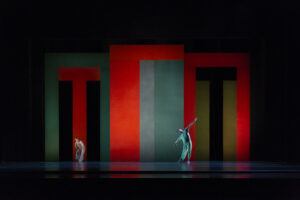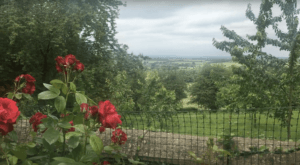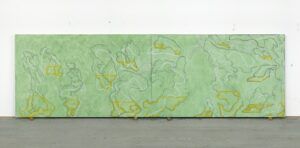This is the first in a series of blog posts I’ll be writing about the evolution of Four Quartets, the major dance commission that will premiere in the Bard SummerScape Festival in July. The project is being created by a group of superb contemporary artists – choreographer Pam Tanowitz and her dance company, the composer Kaija Saariaho, visual artist Brice Marden, actress Kathleen Chalfant, and The Knights, a Brooklyn-based contemporary music ensemble. Together they are developing an ambitious performance that celebrates T. S. Eliot’s last great poetic work, Four Quartets, first published at the height of World War II in 1943.
Eliot’s poems are complex and beautiful meditations on time and timelessness, and on the limits of human comprehension of the divine. Eliot wrote them in part as a response to spiritual epiphanies he experienced in four particular places, which also give the poems their names – Burnt Norton, East Coker, the Dry Salvages, and Little Gidding. Three are in Britain, and one, the Dry Salvages, is a cluster of rocks off the coast of Massachusetts.
There is a complete text of the poems here, and you can also find recordings online of several great actors reading the poem, including Jeremy Irons, Alec Guinness, and even Eliot himself.
Gideon Lester’s undergraduate copies of Four Quartets
The journey to our production began in July 2015, when the Fisher Center presented an evening of Pam Tanowitz’s dances. One of them had a particularly beautiful title—“A broken story (wherein there is no ecstasy).” The next morning, in Murray’s cafe in Tivoli, I asked Pam about its origins. She told me that she had combined the title of J.D. Salinger’s “The Heart of a Broken Story” with a line from “East Coker”:
In order to arrive there,
To arrive where you are, to get from where you are not,
You must go by a way wherein there is no ecstasy.
We immediately discovered our mutual love of Four Quartets. Each of us had been particularly struck by the frequency with which dance and dancing recur in the poems (which I’ll write about in a future post.) I asked Pam to consider creating a dance performance with Eliot’s poems as the score, timed to coincide with the 75thanniversary of the publication in 2018, if we could obtain the rights.
Three years later we indeed have the rights—Pam’s Four Quartets will actually be the first authorized dance or theater performance inspired by the poems—and the creative process is well underway. I look forward to sharing details with you in the coming months.

















